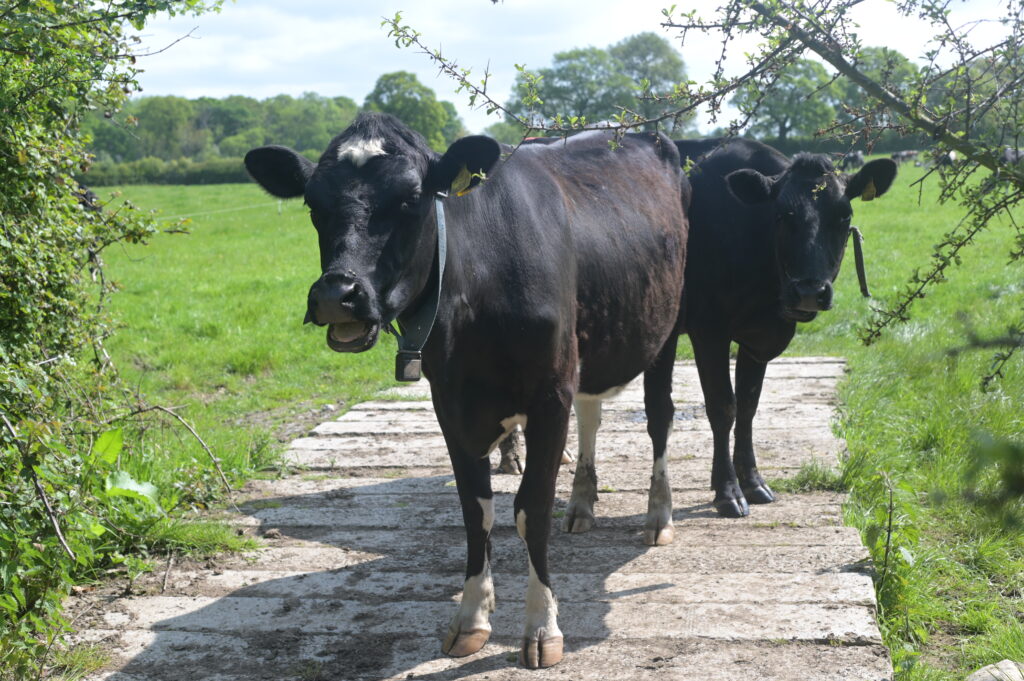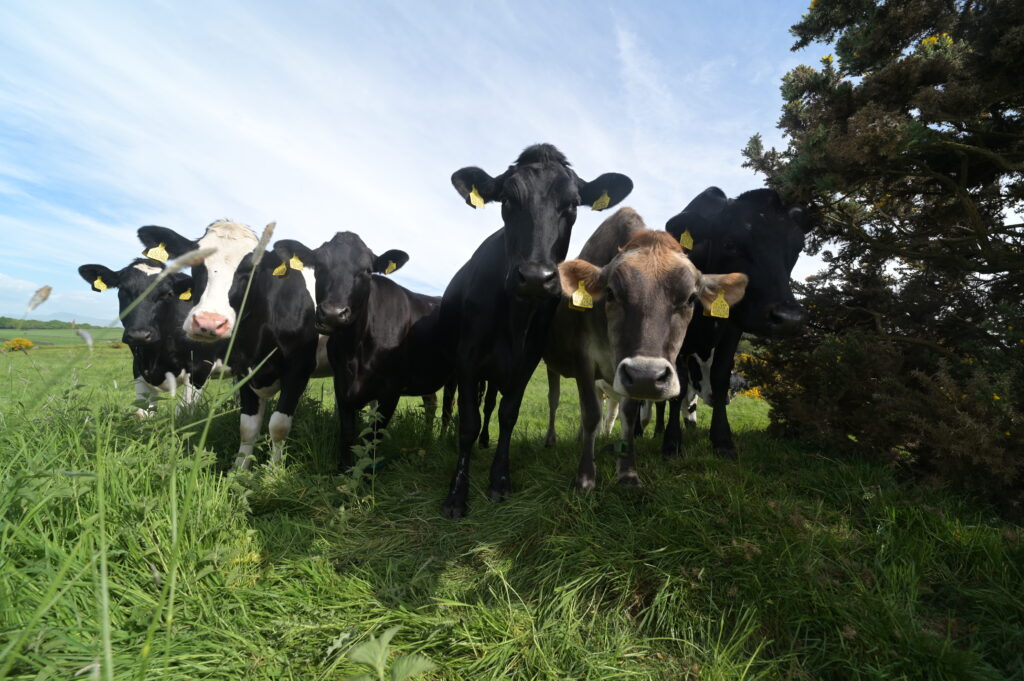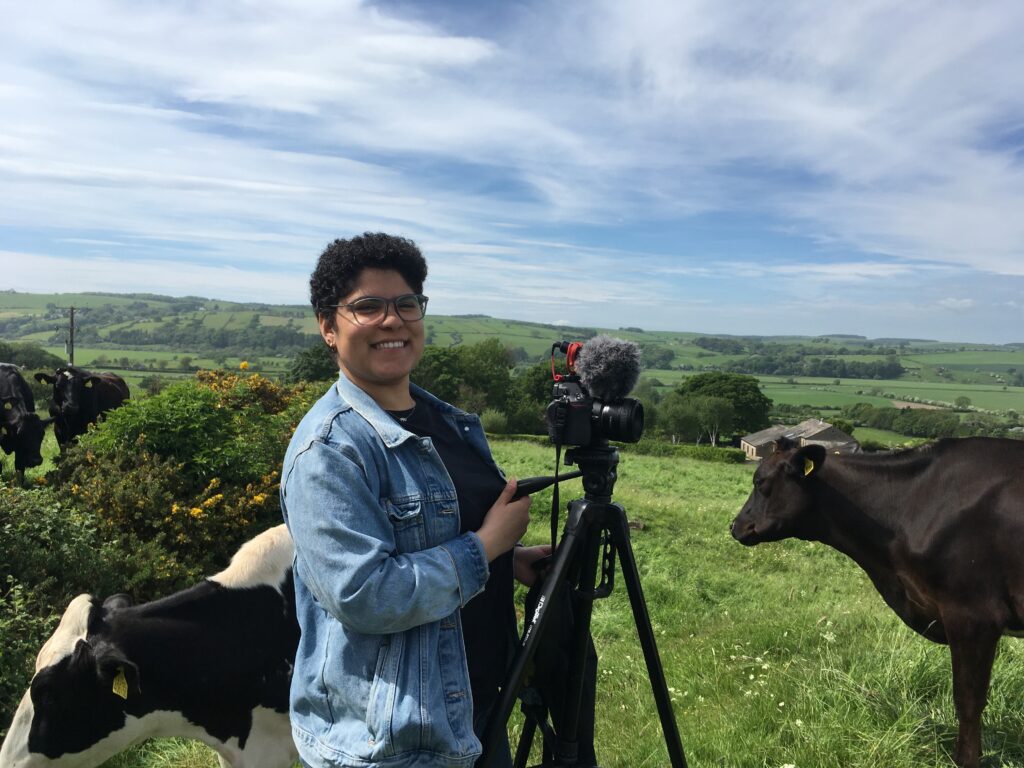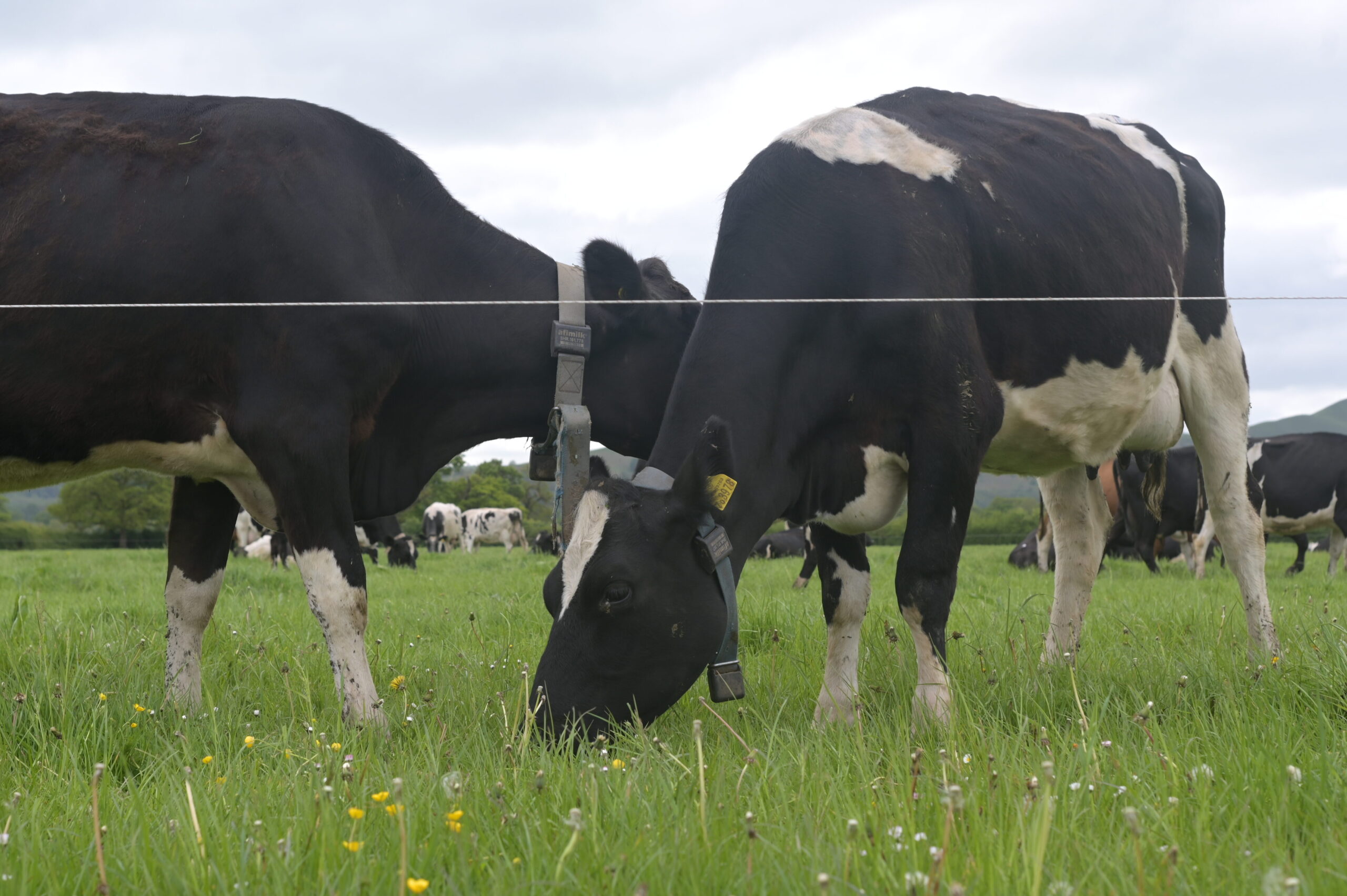Sara Hall* and Walter Kiptoo Kiplagat*
In February 2023, the UK Smart Dairy team led a series of zoom interviews with eight what-we-termed ‘model farmers’, early adopters of climate smart technologies and practices. After these, the research team was invited to visit these dairy farms across the UK, from the West Country to the Lake District. These farms were implementing widely diverse innovations, from high-end technologies to regenerative principles, all with the aim of benefiting the environment, the animals, and the consumer.


We were keen to get a better sense of the adoption process, to understand how the technologies work, and to hear from the farmer what the benefits and challenges are associated with adoption. We also aimed to document these technologies through videos, interviews and still images. These would then be used in the consumer experiments which followed. These experiments intend to assess the consumers’ food habits and preferences, their knowledge regarding smart dairy, and their willingness to pay for smart dairy technology investments made by farmers.


The technologies and practices considered include heat recovery systems, reducing inputs on the farm, innovative waste management, grazing management, mob grazing, cover crops and herbal leys, genetic management and precision livestock, as well feed additives and early-stage methane capture techniques. Before the visits, we organized these into three distinct sets: nature based, technology based, and emission-reduction based. The nature-based innovations aim to balance out the greenhouse gas emissions from the system by boosting carbon storage through, among other things, improved soil health. These include silvopasture, mob grazing, herbal leys, cover crops and the reduction of certain inputs. The technology-based innovations reduce the amount of greenhouse gasses by altering input combination and reducing inefficiencies through improvement of animal health, welfare, and the usage of genetics. These include precision livestock technologies, genetic management, and also the reduction of certain inputs as well as heat recovery systems. The emission-reduction based innovations aim to tackle greenhouse gas emissions directly at the source of emissions, with emphasis on animal’s ruminal methane synthesis through feed additives and the capture of nitrous oxide or methane coming from slurry, and in the future, the animals.


On the day itself, the farmers were very generous with their time. They gave our team a tour of the dairy farm, showed the herd, and illustrated the workings of the various smart dairy innovations and practices. Some of our highlights:
- Visiting a herd of six hundred cows, who were milked at an outdoor milking parlor. We arrived as the cows were moving to a new pasture, as part of the farmer’s mob grazing practice. The passion the farmer held for nature and soil improvement was palpable as the farmer showed the herbal leys the cows were grazing on.
- Learning more about silvopasture and the evident benefits of willow trees, offering cows shelter, an easy source of aspirin, and as witnessed during our visit, a most excellent scratching post!
- Touring a farm by pickup and hearing all about the applications of one farmer’s heat recovery system, with hot water being used to clean the parlor, and the like.
- Witnessing farmers’ collaborative work with neighboring arable farms: piping slurry from their farm, under a public road to the crops where it could be applied, as well as seasonally switching farmlands in order optimize nutrient management.
- Learning more about Bokashi, an innovative and natural waste management process that uses bacteria-rich extracts to inoculate farmyard manure and creates a high nutrient fertilizer with a side effect of reduced greenhouse gas emissions and heat loss from the remaining manure.
- Talking through the many innovations in precision livestock technology, ranging from cameras to activity foot meters, and hearing about their positive effects on the health and welfare of the herd alongside their milk productivity.
- Meeting a herd of cows whose diet includes a garlic extract that actively reduces their methane emissions but handily does not taint their milk.
- Hearing many secondary motivations for smart dairy technology, not just productivity and profits. These included doing your part for the environment, and producing good quality milk from happy, healthy cows. Farmers noted too, the importance of having the technology/innovation protocols implemented to the required standard in order to benefit the environment.
- Having one member of the team with encyclopedic knowledge of local history and attractions to visit, as we travelled through the British countryside!


Most importantly all the farmers were happy to be interviewed and filmed, talking about their innovations as well as allowing us to take plenty of photographs. This footage and narrated imagery are now destined for our consumer experiments where we hope to determine how much consumers are willing to pay for these technologies, and how they should be kept informed about the dairy sector.
*PhD students Smart Dairy project in the UK
Leave a Reply